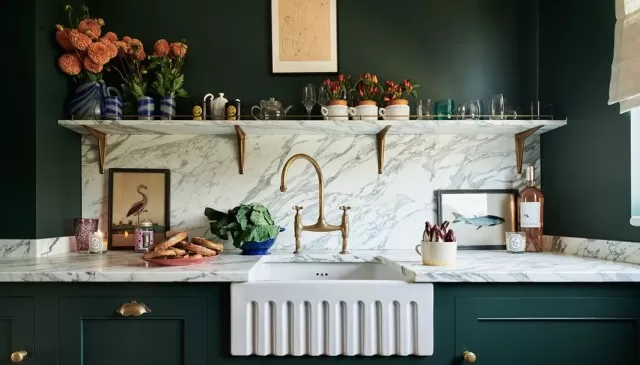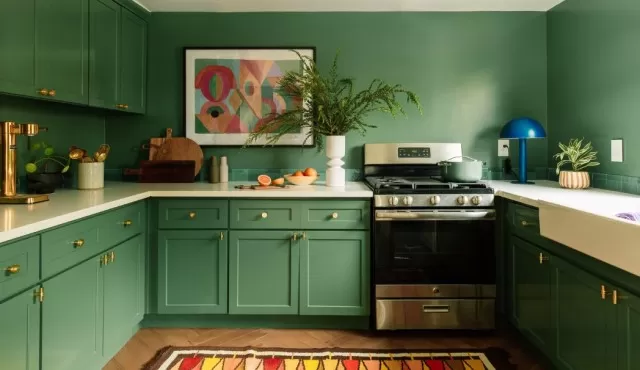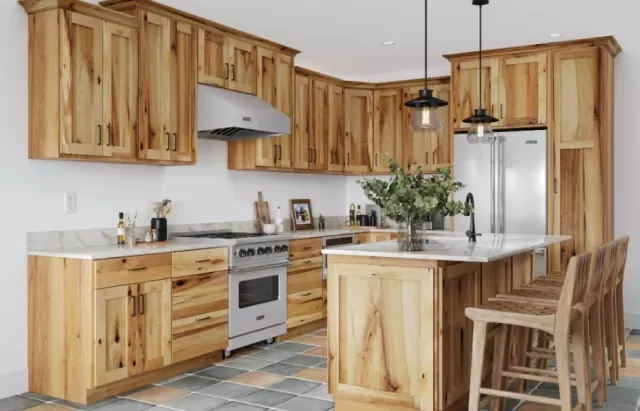Discover the art of kitchen cabinet organization, where every dish, cookware, and ingredient finds its designated place.
With these practical and cost-effective tips, transform cluttered shelves and drawers into efficient and accessible spaces.
Master the art of organizing kitchen cabinets, and enjoy seamless cooking, dining, and entertaining experiences as you make the most of your well-arranged culinary haven.
Methods to Organize Kitchen Cabinets

Ensuring a well-organized kitchen cabinet layout is essential for maintaining a functional and efficient cooking space.
When your cabinets are thoughtfully arranged, you can easily find and access the necessary items, preventing the frustration of searching for specific cookware or utensils. By employing smart kitchen cabinet organization ideas, you can create a clutter-free environment that promotes seamless meal preparation.
One way to optimize cabinet space is by incorporating specialized storage solutions for specific items.
For example, wine lovers can install a wine bottle holder insert, making it easy to keep a few favorite bottles close at hand. Deep drawers are ideal for organizing pots and pans near the stovetop, and by adding dish divider dowels, you can neatly stack dishware without creating a mess.
Ensuring that the drawers are equipped with quality sliding hardware is crucial for their smooth operation, especially when holding heavier items like dishes.

Slide-in storage is a fantastic option for keeping cutting boards, cookie sheets, muffin tins, and similar items organized and easily accessible.
Dividers within a designated cabinet near your prep zone allow these items to stand on end, preventing clutter and making them simple to grab when needed.
One common challenge in kitchen cabinets is managing food storage containers effectively.
Preventing an avalanche of containers every time you open the cupboard door is essential. Dividing the stash of plastic containers and stacking them together like nesting dolls helps to save space and maintain order.
Additionally, you can corral lids by storing them in separate containers, ensuring they stay organized and accessible.
By implementing these practical kitchen cabinet organization tips, you can create a tidy and efficient space that enhances your cooking experience and makes everyday tasks more enjoyable.
Whether you have a small kitchen or a spacious culinary haven, a well-organized cabinet layout will help you make the most of your kitchen space and keep it running smoothly.
How should I arrange my kitchen items?

Organizing your kitchen items strategically and functionally can greatly enhance your cooking and baking experience.
When arranging your kitchen, it’s essential to consider the flow of your food preparation process and the frequent tasks you perform. Here are some key principles to keep in mind while arranging your kitchen items:
Zone Your Kitchen: Group similar items together and create specific zones in your kitchen.
For example, designate a cooking zone near the stove, where you can keep pots, pans, and other cooking essentials. Place a baking zone close to the oven, storing baking sheets, mixing bowls, and baking tools together.
This zoning approach ensures that the items you need for each task are easily accessible.
Utensil Drawer: As you rightly mentioned, keeping utensils in a drawer near the food preparation area is a smart move.
This allows you to quickly grab the necessary tools while cooking without having to move around too much.
Glassware Placement: Placing glassware near the sink or refrigerator is indeed a practical choice.
It facilitates easy access when you need to grab a glass for a refreshing drink or put away clean glasses after washing.
Coffee or Tea Station: If you’re a coffee or tea enthusiast, creating a dedicated coffee or tea station is a fantastic idea.
Organize your Coffee Maker, teapot, coffee filters, and mugs in one area, ideally close to the water source, like the sink. This way, you can efficiently prepare your morning beverages without having to move back and forth.
Pantry Organization: For your dry goods and non-perishable items, arrange them in your pantry or cupboard with a clear labeling system.
Group similar items together, like spices, canned goods, and baking ingredients, to streamline your cooking process and prevent the frustration of searching for specific items.
Kitchen Counter Clutter: Keep your kitchen counters as clutter-free as possible by storing only the most frequently used items, like a cutting board, knife block, and a few essential spices, within easy reach.
This creates a clean and inviting space for food preparation.
Regular Evaluation: Periodically evaluate your kitchen organization to ensure it remains efficient.
As your cooking habits change or new kitchen tools are acquired, consider adjusting the arrangement to accommodate your evolving needs.
By applying these organization principles, you’ll create a kitchen that not only looks tidy but also functions smoothly, making your culinary endeavors a breeze.
A well-organized kitchen enhances your cooking efficiency and elevates the joy of preparing meals in a space that feels both functional and inviting.
*The information is for reference only.